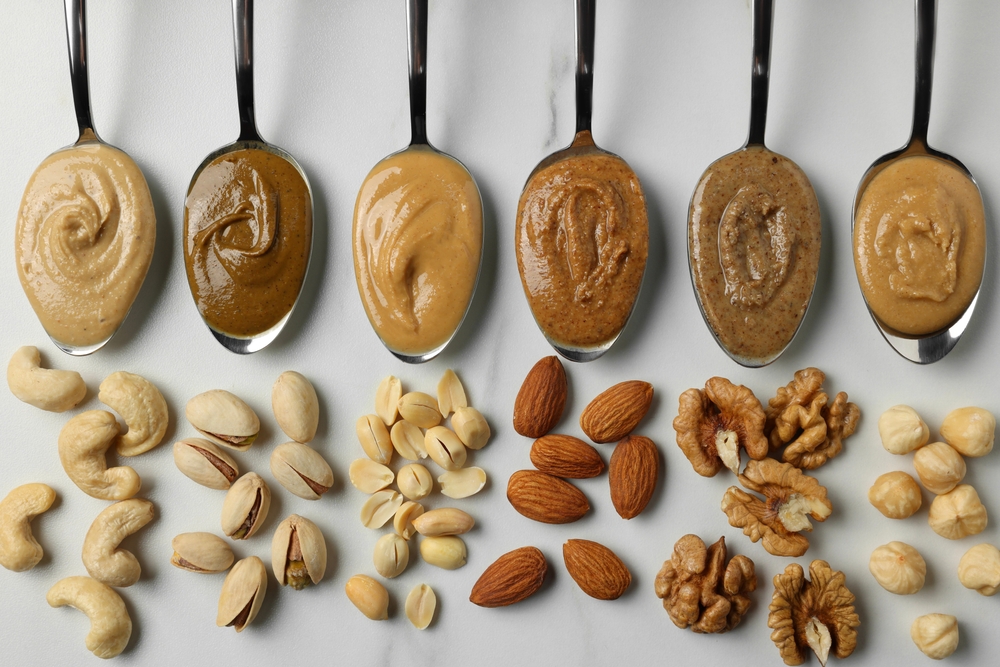When it comes to choosing the healthiest nut butter, many consumers automatically lean toward almond butter, often assuming it is the superior option. However, new nutritional research suggests that the differences between almond and peanut butter are more nuanced than commonly thought. While both offer distinct health benefits, their nutritional profiles vary significantly. Understanding these differences can help individuals make more informed dietary choices.
Protein and energy content
Contemporary studies on dietary fats and proteins show that while almond butter and peanut butter share similar caloric values, their protein content varies. Peanut butter provides a slightly higher protein content, making it a better option for those looking to maintain or build muscle. Both nut butters, however, supply healthy fats that provide long-lasting energy, making them ideal snacks to sustain energy levels throughout the day. Though almond butter has slightly fewer calories, its fat content also contributes to keeping you full longer.
When it comes to energy provision, both nut butters pack a punch, but peanut butter edges ahead with a more substantial protein load. Protein is crucial for muscle repair and growth, meaning that peanut butter may be more beneficial for active individuals or those aiming to increase their protein intake without consuming excessive calories.
Mineral and vitamin variations
Nutritional comparisons also show distinct variations in the mineral and vitamin content of these spreads. Almond butter is a strong contender in the race for essential vitamins, particularly due to its higher levels of calcium and vitamin E. Calcium, a crucial mineral for bone health, is more abundant in almond butter than peanut butter. This makes almond butter a preferred choice for those looking to boost their calcium intake.
On the other hand, peanut butter excels in providing selenium and B-vitamins, which play vital roles in metabolism and immune function. Selenium is an antioxidant that helps protect cells from damage, while B-vitamins like niacin and folate contribute to overall energy production and red blood cell formation. For those seeking to optimize their intake of these nutrients, peanut butter may be the better option.
Fiber and heart health
Research consistently highlights the importance of fiber for cardiovascular health, and in this category, almond butter stands out. The higher fiber content of almond butter contributes to better heart health by helping lower cholesterol levels and promoting a healthy digestive system. Fiber-rich diets are also associated with reduced risks of heart disease, making almond butter a valuable option for individuals focused on maintaining cardiovascular health.
While peanut butter may not be as fiber-dense, it still provides important benefits for heart health. The monounsaturated fats found in peanut butter have been shown to help lower bad cholesterol levels. These heart-healthy fats can support long-term cardiovascular health, making peanut butter a suitable choice for those looking to improve heart function and reduce the risk of heart disease.
Practical applications
Both almond and peanut butter can be incorporated into a variety of dishes to enhance nutritional value. From smoothies to oatmeal, both nut butters offer versatile options for adding flavor and healthy fats. Research also shows that the right preparation methods can maximize their benefits. For example, spreading nut butters on whole-grain bread or pairing them with fruits like apples or bananas provides a balanced combination of healthy fats, protein, and fiber.
Both options work well in cooking and baking, though almond butter’s more subtle flavor profile can be advantageous when paired with sweeter dishes, while peanut butter’s robust taste lends itself well to savory meals. Ultimately, both nut butters offer a variety of practical applications that can fit into different eating habits.
Individual considerations
One of the most significant factors in choosing between almond and peanut butter is individual dietary needs. Both almond and peanut butter offer distinct benefits, but they are not one-size-fits-all options. For those with nut allergies, for instance, peanut butter is not an option. Additionally, individuals following specific diets, such as vegan or paleo, may prefer almond butter due to its cleaner ingredients and plant-based nature.
When it comes to health goals, it’s important to personalize the choice based on factors such as weight management, muscle building, or heart health. For those looking to increase protein intake without adding too many calories, peanut butter may be the more appropriate choice. Conversely, individuals focused on calcium intake or seeking a higher fiber content may find almond butter more beneficial.
Future perspectives
As research on nutritional science continues to evolve, new insights into the benefits and applications of nut butters will emerge. Future studies may delve deeper into the long-term health effects of consuming these spreads and how they influence various aspects of health, from gut microbiome balance to mental well-being.
In the meantime, almond and peanut butters will remain popular choices due to their accessibility, versatility, and health benefits. As more people become aware of the subtle differences in their nutritional compositions, the decision of which nut butter to include in their diet will ultimately depend on their specific health needs, preferences, and lifestyle goals.
Both almond and peanut butter are nutrient-dense foods with unique advantages. By understanding their differences, individuals can make informed decisions about which spread works best for their health goals.
















